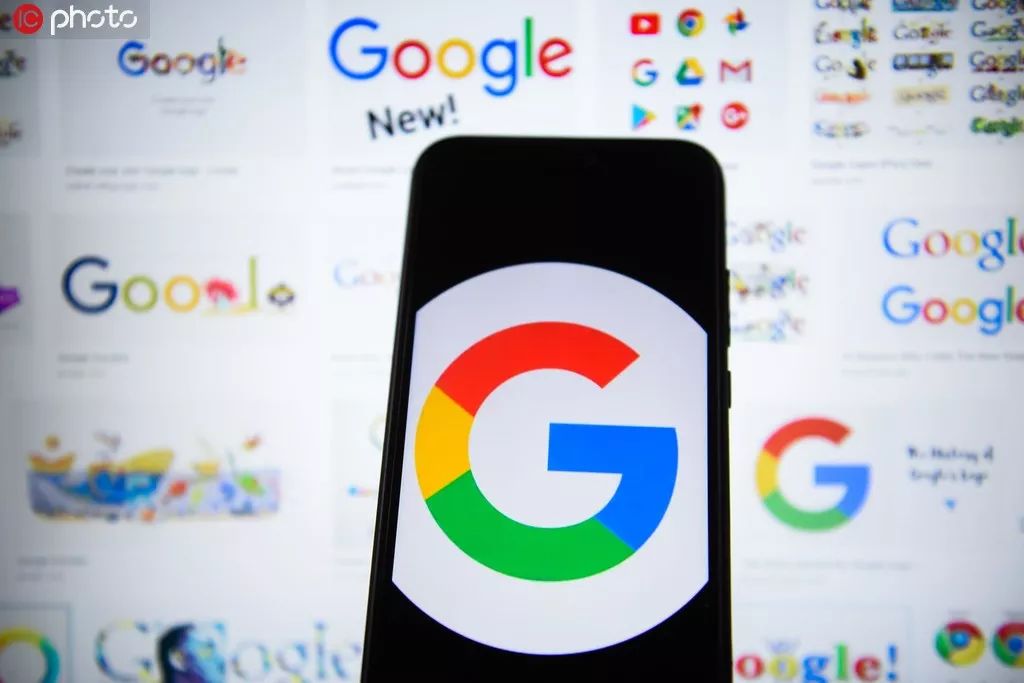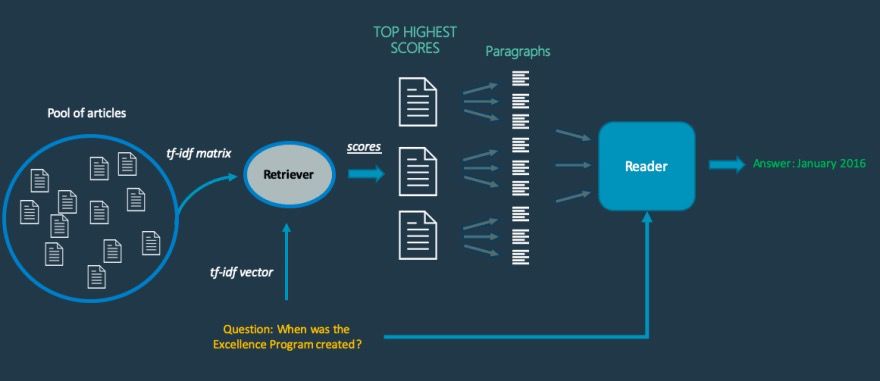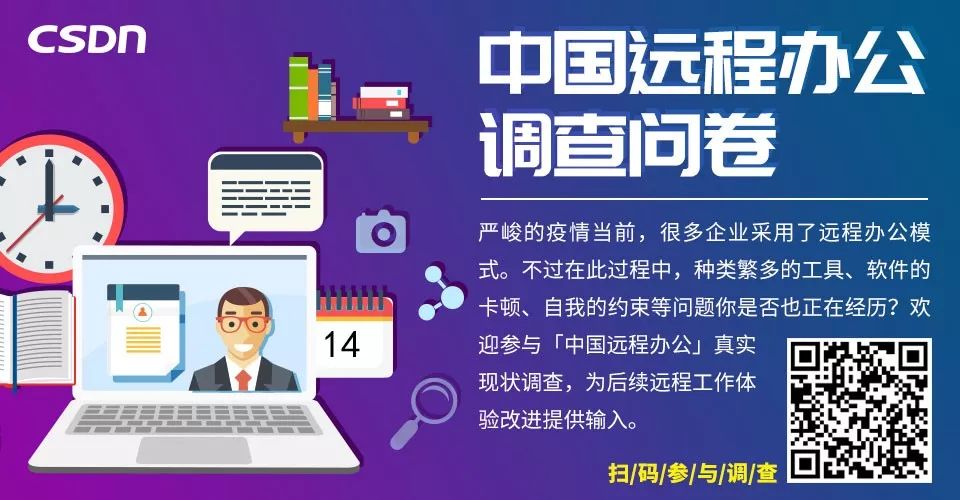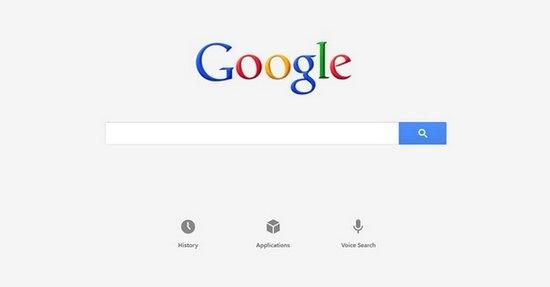如何使用 Python 构建一个“谷歌搜索”系统? | 内附代码

有一件事我们要清楚,在考试期间不可能在互联网上搜索问题,但是当考官转过身去的时候,我可以很快地拍一张照片。这是算法的第一部分。我得想办法把这个问题从图中提取出来。
似乎有很多服务可以提供文本提取工具,但是我需要某种API来解决此问题。最后,Google的VisionAPI正是我正在寻找的工具。很棒的事情是,每月前1000个API调用是免费的,这足以让我测试和使用该API。
首先,创建Google云帐户,然后在服务中搜索Vision AI。使用VisionAI,您可以执行诸如为图像分配标签来组织图像,获取推荐的裁切顶点,检测著名的风景或地方,提取文本等工作。
检查文档以启用和设置API。配置后,您必须创建JSON文件,包含您下载到计算机的密钥。
pip install google-cloud-visionimport os, iofrom google.cloud import visionfrom google.cloud.vision import types# JSON file that contains your keyos.environ['GOOGLE_APPLICATION_CREDENTIALS'] = 'your_private_key.json'# Instantiates a clientclient = vision.ImageAnnotatorClient()FILE_NAME = 'your_image_file.jpg'# Loads the image into memorywith io.open(os.path.join(FILE_NAME), 'rb') as image_file:content = image_file.read()image = vision.types.Image(content=content)# Performs text detection on the image fileresponse = client.text_detection(image=image)print(response)# Extract descriptiontexts = response.text_annotations[0]print(texts.description)
import reimport urllib# If ending with question markif '?' in texts.description:question = re.search('([^?]+)', texts.description).group(1)# If ending with colonelif ':' in texts.description:question = re.search('([^:]+)', texts.description).group(1)# If ending with newlineelif '\n' in texts.description:question = re.search('([^\n]+)', texts.description).group(1)# Slugify the matchslugify_keyword = urllib.parse.quote_plus(question)print(slugify_keyword)
我们将使用 BeautifulSoup 抓取前3个结果,以获得关于问题的一些信息,因为答案可能位于其中之一。
另外,如果您想从Google的搜索列表中抓取特定的数据,不要使用inspect元素来查找元素的属性,而是打印整个页面来查看属性,因为它与实际的属性有所不同。
/url?q=https://en.wikipedia.org/wiki/IAU_definition_of_planet&sa=U&ved=2ahUKEwiSmtrEsaTnAhXtwsQBHduCCO4QFjAAegQIBBAB&usg=AOvVaw0HzMKrBxdHZj5u1Yq1t0enresult_urls = []def crawl_result_urls():req = Request('https://google.com/search?q=' + slugify_keyword, headers={'User-Agent': 'Mozilla/5.0'})html = urlopen(req).read()bs = BeautifulSoup(html, 'html.parser')results = bs.find_all('div', class_='ZINbbc')try:for result in results:link = result.find('a')['href']# Checking if it is url (in case)if 'url' in link:result_urls.append(re.search('q=(.*)&sa', link).group(1))except (AttributeError, IndexError) as e:pass
这是算法的主要部分。从前3个结果中抓取信息后,程序应该通过迭代文档来检测答案。首先,我认为最好使用相似度算法来检测与问题最相似的文档,但是我不知道如何实现它。
pip install cdqaimport pandas as pdfrom ast import literal_evalfrom cdqa.utils.filters import filter_paragraphsfrom cdqa.utils.download import download_model, download_bnpp_datafrom cdqa.pipeline.cdqa_sklearn import QAPipeline# Download data and modelsdownload_bnpp_data(dir='./data/bnpp_newsroom_v1.1/')download_model(model='bert-squad_1.1', dir='./models')# Loading data and filtering / preprocessing the documentsdf = pd.read_csv('data/bnpp_newsroom_v1.1/bnpp_newsroom-v1.1.csv', converters={'paragraphs': literal_eval})df = filter_paragraphs(df)# Loading QAPipeline with CPU version of BERT Reader pretrained on SQuAD 1.1cdqa_pipeline = QAPipeline(reader='models/bert_qa.joblib')# Fitting the retriever to the list of documents in the dataframecdqa_pipeline.fit_retriever(df)# Sending a question to the pipeline and getting predictionquery = 'Since when does the Excellence Program of BNP Paribas exist?'prediction = cdqa_pipeline.predict(query)print('query: {}\n'.format(query))print('answer: {}\n'.format(prediction[0]))print('title: {}\n'.format(prediction[1]))print('paragraph: {}\n'.format(prediction[2]))
它的输出应该是这样的:
基本上,当从图片中提取问题并将其发送到系统时,检索器将从已抓取数据中选择最有可能包含答案的文档列表。如前所述,它计算问题与抓取数据中每个文档之间的余弦相似度。
然后,读者输出在每个段落中找到的最可能的答案。在阅读者之后,系统中的最后一层通过使用内部评分函数对答案进行比较,并根据分数输出最有可能的答案,这将得到我们问题的答案。
下面是系统机制的模式。

def get_result_details(url):try:req = Request(url, headers={'User-Agent': 'Mozilla/5.0'})html = urlopen(req).read()bs = BeautifulSoup(html, 'html.parser')try:# Crawl any heading in result to name pdf filetitle = bs.find(re.compile('^h[1-6]$')).get_text().strip().replace('?', '').lower()# Naming the pdf filefilename = "/home/coderasha/autoans/pdfs/" + title + ".pdf"if not os.path.exists(os.path.dirname(filename)):try:os.makedirs(os.path.dirname(filename))except OSError as exc: # Guard against race conditionif exc.errno != errno.EEXIST:raisewith open(filename, 'w') as f:# Crawl first 5 paragraphsfor line in bs.find_all('p')[:5]:f.write(line.text + '\n')except AttributeError:passexcept urllib.error.HTTPError:passdef find_answer():df = pdf_converter(directory_path='/home/coderasha/autoans/pdfs')cdqa_pipeline = QAPipeline(reader='models/bert_qa.joblib')cdqa_pipeline.fit_retriever(df)query = question + '?'prediction = cdqa_pipeline.predict(query)print('query: {}\n'.format(query))print('answer: {}\n'.format(prediction[0]))print('title: {}\n'.format(prediction[1]))print('paragraph: {}\n'.format(prediction[2]))return prediction[0]
我总结一下算法:它将从图片中提取问题,在Google上搜索它,抓取前3个结果,从抓取的数据中创建3个pdf文件,最后使用问答系统找到答案。
如果你想看看它是如何工作的,请检查我做的一个可以从图片中解决考试问题的机器人。
以下是完整的代码:
import os, ioimport errnoimport urllibimport urllib.requestimport hashlibimport reimport requestsfrom time import sleepfrom google.cloud import visionfrom google.cloud.vision import typesfrom urllib.request import urlopen, Requestfrom bs4 import BeautifulSoupimport pandas as pdfrom ast import literal_evalfrom cdqa.utils.filters import filter_paragraphsfrom cdqa.utils.download import download_model, download_bnpp_datafrom cdqa.pipeline.cdqa_sklearn import QAPipelinefrom cdqa.utils.converters import pdf_converterresult_urls = []os.environ['GOOGLE_APPLICATION_CREDENTIALS'] = 'your_private_key.json'client = vision.ImageAnnotatorClient()FILE_NAME = 'your_image_file.jpg'with io.open(os.path.join(FILE_NAME), 'rb') as image_file:content = image_file.read()image = vision.types.Image(content=content)response = client.text_detection(image=image)texts = response.text_annotations[0]# print(texts.description)if '?' in texts.description:question = re.search('([^?]+)', texts.description).group(1)elif ':' in texts.description:question = re.search('([^:]+)', texts.description).group(1)elif '\n' in texts.description:question = re.search('([^\n]+)', texts.description).group(1)slugify_keyword = urllib.parse.quote_plus(question)# print(slugify_keyword)def crawl_result_urls():req = Request('https://google.com/search?q=' + slugify_keyword, headers={'User-Agent': 'Mozilla/5.0'})html = urlopen(req).read()bs = BeautifulSoup(html, 'html.parser')results = bs.find_all('div', class_='ZINbbc')try:for result in results:link = result.find('a')['href']print(link)if 'url' in link:result_urls.append(re.search('q=(.*)&sa', link).group(1))except (AttributeError, IndexError) as e:passdef get_result_details(url):try:req = Request(url, headers={'User-Agent': 'Mozilla/5.0'})html = urlopen(req).read()bs = BeautifulSoup(html, 'html.parser')try:title = bs.find(re.compile('^h[1-6]$')).get_text().strip().replace('?', '').lower()# Set your path to pdf directoryfilename = "/path/to/pdf_folder/" + title + ".pdf"if not os.path.exists(os.path.dirname(filename)):try:os.makedirs(os.path.dirname(filename))except OSError as exc:if exc.errno != errno.EEXIST:raisewith open(filename, 'w') as f:for line in bs.find_all('p')[:5]:f.write(line.text + '\n')except AttributeError:passexcept urllib.error.HTTPError:passdef find_answer():# Set your path to pdf directorydf = pdf_converter(directory_path='/path/to/pdf_folder/')cdqa_pipeline = QAPipeline(reader='models/bert_qa.joblib')cdqa_pipeline.fit_retriever(df)query = question + '?'prediction = cdqa_pipeline.predict(query)# print('query: {}\n'.format(query))# print('answer: {}\n'.format(prediction[0]))# print('title: {}\n'.format(prediction[1]))# print('paragraph: {}\n'.format(prediction[2]))return prediction[0]crawl_result_urls()for url in result_urls[:3]:get_result_details(url)sleep(5)answer = find_answer()print('Answer: ' + answer)
有时它可能会混淆,但我认为总体来说是可以的。至少我可以用60%的正确答案通过考试。
欢迎开发者们在评论中告诉我你的看法!实际上,最好是一次遍历所有问题,但我没有足够的时间来做这件事,所以只好下次继续再做。













